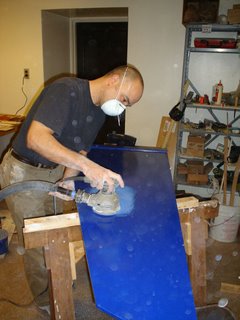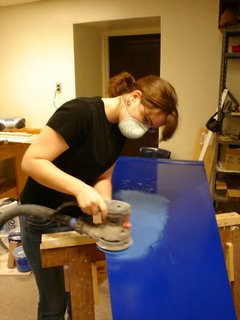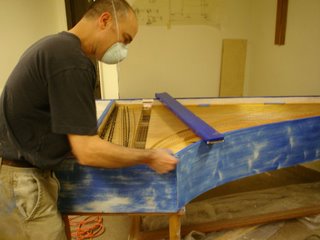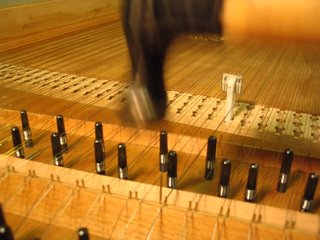Le Diable Bleu debut
Here is Le Diable Bleu in the chancel of Duke Chapel on the day of the debut recital by University Organist Dr. Robert Parkins.


 Dr. Parkins warms up pre-recital.
Dr. Parkins warms up pre-recital. The name batten was the last thing to be added to the instrument. I need to thank Robert at Body Billboards of Durham, NC, for the wonderful silk screen work. It was a fitting final touch.
The name batten was the last thing to be added to the instrument. I need to thank Robert at Body Billboards of Durham, NC, for the wonderful silk screen work. It was a fitting final touch.Greg Abernathy, who donated the Hubbard kit to the Duke Music Department on behalf of his late father, was on hand with his wife Tara and their son to hear the first public performance of Le Diable Bleu.
Here is the program from the program.














































